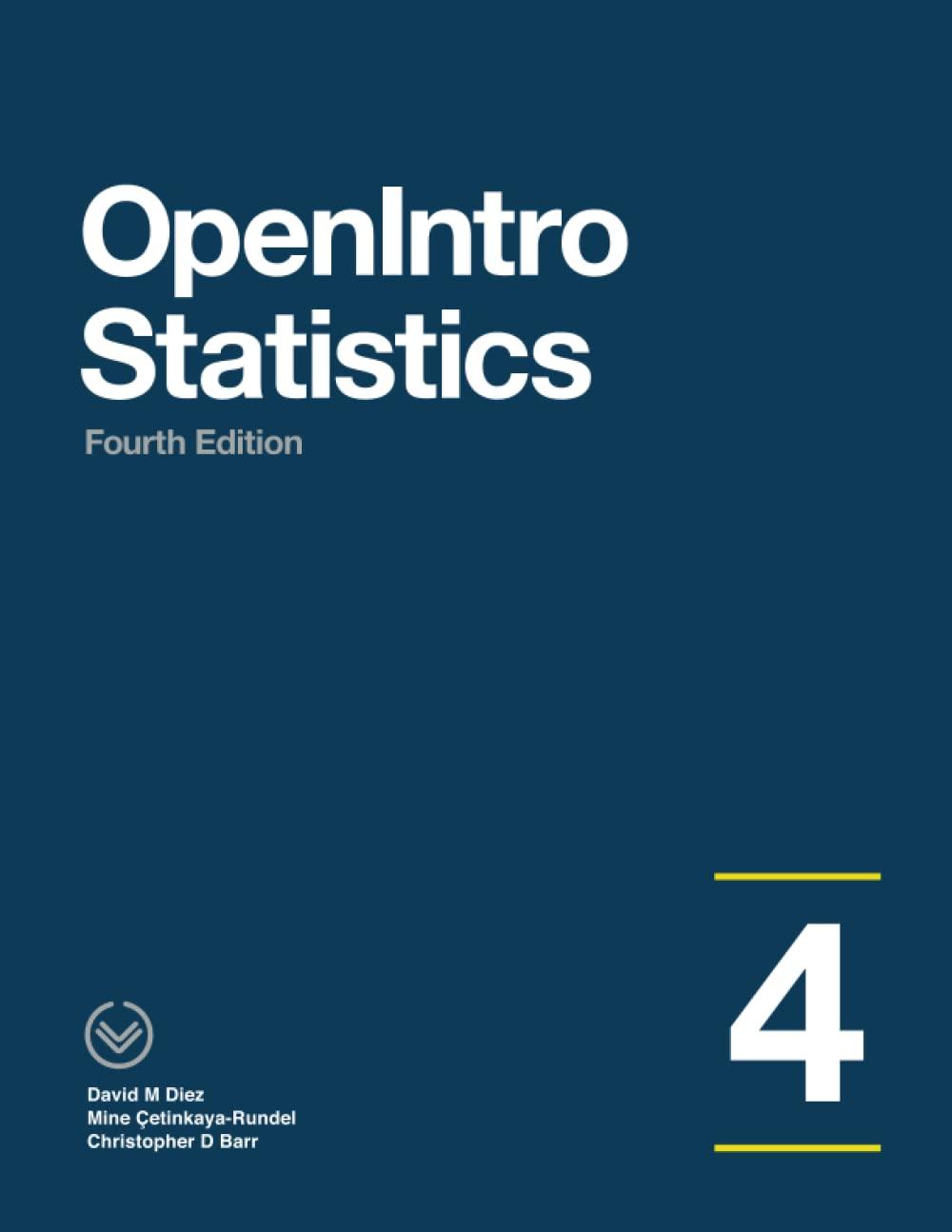Exercise 1.5 introduces a study where researchers studying the relationship between honesty, age, and self-control conducted an
Question:
Exercise 1.5 introduces a study where researchers studying the relationship between honesty, age, and self-control conducted an experiment on 160 children between the ages of 5 and 15. The researchers asked each child to toss a fair coin in private and to record the outcome (white or black) on a paper sheet, and said they would only reward children who report white. Half the students were explicitly told not to cheat and the others were not given any explicit instructions. Differences were observed in the cheating rates in the instruction and no instruction groups, as well as some differences across children's characteristics within each group.
(a) Identify the population of interest and the sample in this study.
(b) Comment on whether or not the results of the study can be generalized to the population, and if the findings of the study can be used to establish causal relationships.
Data from Exercise 1.5
Researchers studying the relationship between honesty, age and self- control conducted an experiment on 160 children between the ages of 5 and 15. Participants reported their age, sex, and whether they were an only child or not. The researchers asked each child to toss a fair coin in private and to record the outcome (white or black) on a paper sheet, and said they would only reward children who report white. The study's findings can be summarized as follows: "Half the students were explicitly told not to cheat and the others were not given any explicit instructions. In the no instruction group probability of cheating was found to be uniform across groups based on child's characteristics. In the group that was explicitly told to not cheat, girls were less likely to cheat, and while rate of cheating didn't vary by age for boys, it decreased with age for girls."
(a) Identify the main research question of the study.
(b) Who are the subjects in this study, and how many are included?
(c) How many variables were recorded for each subject in the study in order to conclude these ndings? State the variables and their types.
Step by Step Answer:

OpenIntro Statistics
ISBN: 9781943450077
4th Edition
Authors: David Diez, Mine Çetinkaya-Rundel, Christopher Barr





